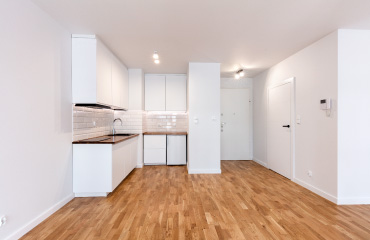
LA BRIDGING
Bridge to Let
& property development
Are you a property developer or do you own and operate rental property,
Bridge to Let finance opens a world of opportunities for developing property.

Bridge to Let loans using through LA Bridging
Bridge to Let explained
To put it simply this is a loan product designed for landlords who wish to keep their properties to build a portfolio to rent to tenants rather than purchasing property to flip. These types of loans come with a pre-approved buy to let mortgage meaning they are more flexible than standard mortgage products that may not allow property investors to secure the right type of deal.




How does it work?
A portion of the loan can be used to either purchase or refurbish a property. In some cases you can do both. Once the property is deemed satisfactory to be let to a tenant, the loan is transferred to a buy to let mortgage. The main benefit to you here is you have a faster turnaround for loan approval and have a pre-defined exit strategy to your bridging loan which takes away some of the stresses of securing finance on completion of renovation property works. This type of financing can be secured within days rather than weeks or months depending if all the details of the property case stack up.
What do you mean by exit strategy?
To secure any type of bridging loan any applicant would need to be able to display to a lender their ability on how they intend repay the full loan amount. Examples of this would be selling the property to realise capital or simply converting a bridge loan to a buy to let mortgage to aid long term cash flow. A bridge to let finance product factors in the exit strategy immediately, this means at the point you the landlord start letting your property and need to switch to more attractive rates on a longer term deal, you are able to do so with the same lender. This saves time and hassle as you are not required to fill out multiple applications to secure finance.

You will need to compile the basic information most lenders require to gain any loan approval. For an individual or Company these tend to be the following:
- Contact Info
- Company Info
- Director Details
- Property Details
- Property Valuation
- Your business case for the property and exit strategy, this will include a detailed list of all works required to be done to the property and the main contractors that will be used to complete this.
- Your background and property experience
- Funding requirement
- Proof of funds (deposit) and any additional security available to secure funding if required.
Rates are based on the applicant and the project and they will always vary from lender to lender. In most cases those with a clean credit history and a strong track record of property development or refurbishment can potentially expect to obtain attractive rates.
If the numbers for the project stack up and it is deemed viable there maybe lenders willing to consider taking up the option to facilitate a loan with someone who has an adverse credit history. However, due to the applicant’s profile expect to pay a higher rate of interest for the privilege of a loan to offset the risk to the lender.
Yes. Most lenders will use a metric based on the Loan to Value (LTV) of the property. For a bridging loan the maximum a lender may be willing to stretch is 80% LTV. In a nutshell this means that they would be willing to lend you up to 80% of the value the property is worth, for example if you have a house valued at £250,000 with an LTV of 80% this means a lender would be prepared to lend you a maximum of £200,000 with them taking a charge as security against the property. However the industry average LTV for buy to lets is around 75%, bear in mind in some cases the higher the LTV the higher the rates will be in order to pay back the loan. Things that can influence a lenders’ decision on a LTV is a valuation report and the term of the loan. If the state of property is deemed uninhabitable and if there is a huge disparity into what you think it is worth on completion of works the end is result is likely to be the lender offering a lower loan amount due to their perceived risk exposure.
The percentages quoted above are gross loan percentages i.e. before interest and fees are deducted.
As interest rates and fees vary from lender to lender but before you enter any deal it is wise to try and obtain an illustration of what a potential deal may look like if you were to proceed with a loan application. In some cases it may be more prudent to use a broker who has access to the whole of market to find you the best possible deal. These are list of fees or considerations to factor in:
- Interest Rate
- Product Fee – Usually payable on application
- Valuation Fee – Usually payable on application
- Assessment Fee
- Funds Transfer Fee – Usually deducted from the advance
- Loan Exit Fee – Usually 1% of the loan amount
- Broker Fee
- Solicitors & Conveyance Fees
Alternative options available
Commercial mortgage lenders will only lend against ready to use property. They will not lend against property which needs to be refurbished unless the business is going to pay for the refurbishment themselves and the refurbishment itself is mostly cosmetic.
Bridging finance is generally the type of lending used where a borrower intends to refurbish a commercial property and requires funding towards that we well as the purchase. If bridging finance is required, the business will need a deposit of approximately 35% and LA Bridging can also secure lending towards refurbishment which can be as much as 100%.
If bridging finance is required, LA Bridging is able to organise a long term commercial mortgage once any refurbishment is near completion.
Where a business is looking to purchase or refinance a large portfolio of buy to let residential property, they are often told they need a commercial mortgage but what they actually need is a multi-unit buy to let mortgage which LA Bridging has access to from its lender panel.

- Risk Management
- Accumulation
- Taxation
- Business Planning
- Raising Start-up Capital
- Estate Planning
- Portfolio Management
Commercial bridging for business, investment or development
Criteria overview
- Competitive and flexible rates
- Up to 100% LTV with additional security.
- Terms from 3 to 18 months
- Adverse credit considered
- Loans from £25K to £50M
- 1ST and 2ND charged lending
Contact us today for your bridging finance, buy to let mortgage, commercial mortgage, bridging loan for house purchase, HMO purchase, emergency cashflow loans, auction finance, bridging loans for property development, bridging loan mortgage, business bridging loan, commercial development financing.
Advantages and flexibility of Bridging Loans.
Although Bridging Loans are primarily used for property purchases by private individuals and for cashflow purposes by auction buyers or property developers, a Bridging Loan has a wider range of uses some of which we have listed below.
- Temporary boost to cashflow for seasonal or liquidated stock purchases.
- Paying a trade creditor, or unforeseen invoice, tax demand or other liability.
- Increase bargaining position for a transaction or limited time financial contract.
- Business takeover, merger or acquisition of another company or business.
- Purchase of new business premises, refurbishment of commercial or residential premises.
- Renovation or conversion of a property to make ready for sale or rental.








